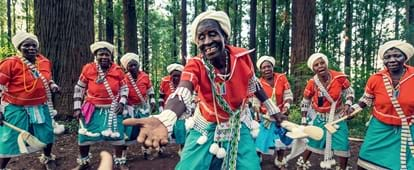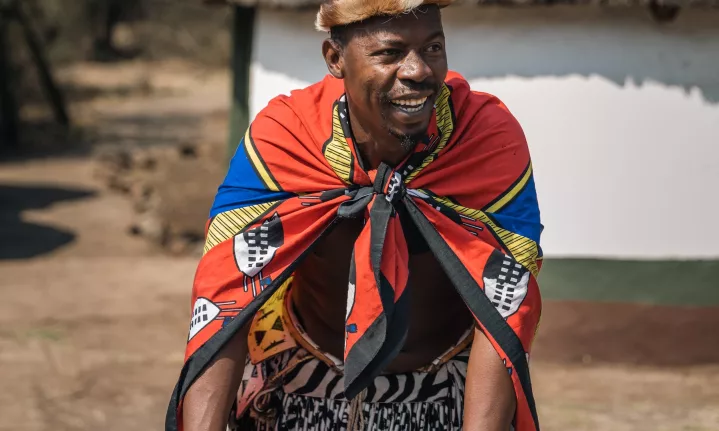The South African Culture Today Ideas
The Main Principles Of South African Culture Today
Table of ContentsThe Best Guide To South African Culture TodayThe Basic Principles Of South African Culture Today South African Culture Today Things To Know Before You Get ThisSouth African Culture Today - An OverviewSouth African Culture Today Things To Know Before You BuyThe smart Trick of South African Culture Today That Nobody is Talking About
A matter of value in Zambian towns is the passing away of enjoyed ones. All members of the village placed cash, time and effort with each other for the interment of the deceased.Throughout the mourning duration; men remain outside the house and the females remain inside your house of the deceased. After speaking concerning the departed, the village strolls to the place of burial to claim their last bye-byes. Songs and dance is a very crucial element of the Zambian culture. The different tribal devices have their very own dancing forms; nevertheless, makishi prevails amongst all people.
More About South African Culture Today
When it comes to music, drums are utilized one of the most, with a selection of drumming events. In Zambia, bulk of the individuals are Christian; Protestant and Roman Catholic. There are tiny teams of Muslims and Hindus, with the remainder following local indigenous tribal ideas.

South African heritage and culture is greatly diverse, and is composed of several groups of people that each have their very own traditions and beliefs. Having such a variety of individuals and cultures is what makes South Africa so unique. In the true feeling of the expression, we are a rainbow nation.
South Africa has around three hundred thousand Portuguese individuals living in it. Making it the 7th on the checklist of countries with the most Portuguese individuals in it outside of Portugal. Portuguese is not only a society, yet it is likewise a language and a nationality. Portuguese individuals originate from the nation of Portugal in Europe, nevertheless, due to Portugal (like several various other countries in Europe) exploring the world and conquering various other countries during the 15th 20th centuries, South Africa has what we call Portuguese South African's living in it.
Excitement About South African Culture Today
Amongst the noticeable features of the topography is a plateau that covers practically two thirds of the facility of the nation. The plateau facility rises toward the southeast, where it climaxes in the Drakensberg variety, component of a cliff that separates the plateau from the coastal areas. The Drakensburg consists of Sparkling wine Castle, the highest peak in the nation.
The region north of the Witwatersrand, called the bushveld, inclines downward from east to west toward the Limpopo River, which forms the worldwide border. The western section of the plateau, the middleveld, also descends towards the west and varies in elevation between the highveld and bushveld. Between the Drakensburg and the eastern and southerly shoreline, the land descends to the sea.
Nearer the coastline there is a low-lying plain called the eastern lowveld. Southwest of the plateau the country comes to be progressively much more arid, offering method to the stony desert of the Great Karroo, approached the eastern by the lower, much better sprinkled plateau of the Little Karroo. Separating the completely dry southerly inside from the sandy littoral of the southern coast and West Cape is an additional array, the Langeberg.
The Basic Principles Of South African Culture Today
The nation's racially, ethnically, and politically divided background has produced nationwide and subnational signs that still function as icons of the country, and others signs that are approved only by particular groups. The monuments to white settler occupation and political dominance, such as the Afrikaner Voortrekker ("leader") Monument in Pretoria and the Rhodes Monolith honoring the British colonial empire builder and Cape prime priest Cecil Rhodes, remain sectarian icons.
The first modern citizens were the San ("bushman") hunter-gatherers and the Khoi ("Hottentot") peoples, that herded animals (South African culture today). The San might have been present for hundreds of years and left evidence of their existence in hundreds of ancient cavern paintings ("rock art"). Bantu-speaking clans that were the forefathers of the Nguni (today's amaZulu, amaXhosa, amaSwazi, and vaTsonga individuals) and Tswana-Sotho language teams (today's Batswana and Southern and Northern Basotho) migrated below eastern Africa as very early as the fifteenth century

Both previous republics of the Orange Free State and Transvaal (South African Republic) were developed by Afrikaner settlers who beat and dispossessed the Basotho and Batswana. Lesotho would certainly have been by force incorporated into the Orange Free State without the expansion of British defense in 1869. The ultimate unification of the country resulted from the South African War (18991902) between the British and the 2 Afrikaner republics, which lowered the nation to ruin at the beginning of the twentieth century.
Afrikaners historically considered themselves the only true South Africans and, while providing complete citizenship to all residents of European descent, rejected that status to people of shade up until the autonomous change of 1994. British South Africans retain a feeling of social and social link to Great Britain without compromising their identity as South Africans.
The 20-Second Trick For South African Culture Today
The diversity and fragmentation within ethnic groupings and the equilibrium of tensions in between those teams during the twentieth century stopped interethnic civil dispute. While intergroup tensions over resources, entitlements, and political prominence stay, those conflicts are as most likely to pit Zulu versus Zulu as Zulu against Xhosa or African against Afrikaner.
From colonial India, British vendors and administrators brought the bent steel decorative roofing systems and slender shoelace work columns that still represent the outdoor patios of homes in the areas and cities throughout the country. Holy places contribute an important building aspect even in the tiniest communities. Along with the soaring steeples and classic stonework of Afrikaans Dutch Reformed churches, Anglican churches, synagogues, mosques, More hints and Hindu temples blog offer range to the religious architectural scene.

Butchering and the developing of conventional grain beer are essential in securing the participation and goodwill of the ancestors who are taken into consideration the guardians of good luck, success, and health. Indian communities maintain their indigenous cooking practices and use them on Islamic and Hindu routine and ritualistic celebrations. Afrikaners and Coloured individuals collect at weekend breaks and unique events at multifamily barbecues called braais, where area bonds are enhanced.
Because this was the primary economic venture of both black Africans and white homesteaders, problem in between those teams fixated the ownership of grazing land and livestock. In 1867, the largest ruby down payments worldwide were uncovered at Kimberley in the west main area. The wealth from those fields aided finance the exploitation of the best gold reef worldwide, which was found on the Witwatersrand in 1886.
Some Known Factual Statements About South African Culture Today
This resulted in misconceptions and calculated misrepresentation in the dealings of white inhabitants and government authorities with African chiefs throughout the early american period (South African culture today). In the establishment of African books, some aspects of common and chiefly "tribal depend on" land period were preserved, and also look here in white backwoods, kinds of common period were still practiced in locations with African communities
After the autonomous transformation of 1994, programs for land restitution, redistribution, and reform were instituted, yet development has actually been slow. The white minority still manages eighty percent of the land. Following agricultural land intrusions in Zimbabwe, the Department of Land Matters has promised to speed up land redistribution.